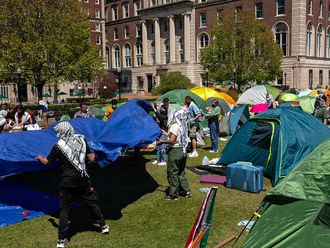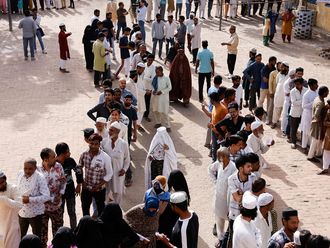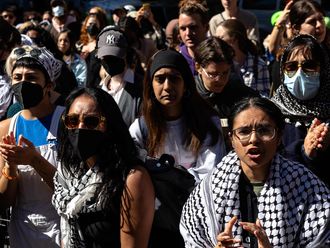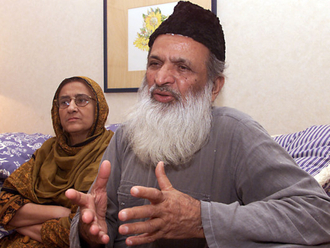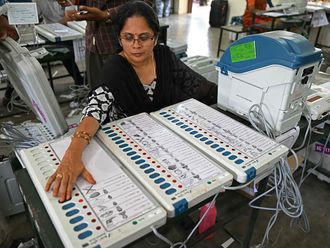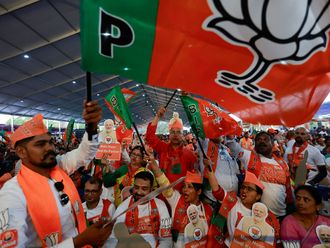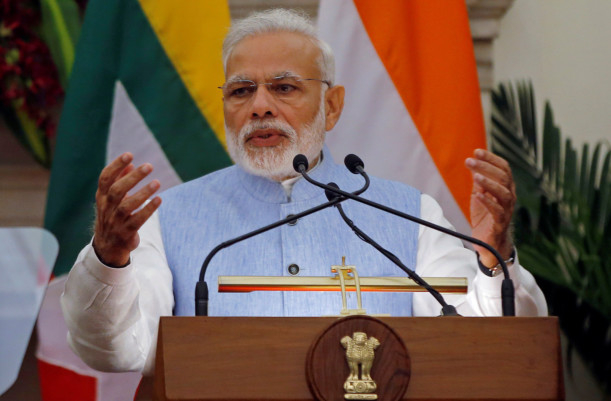
The fallout from the Samajwadi Party’s (SP) infighting is clear in the Indian state of Uttar Pradesh. Till the fratricidal strife broke out, the party had a fair chance in the state elections next year, largely because of the relatively clean and forward-looking image of Chief Minister Akhilesh Yadav. Then, two things happened. First, the SP’s national president, Mulayam Singh Yadav, decided to cut the branch on which he was sitting by favouring his brother, Shivpal, who has a dubious reputation, over his son, Akhilesh, in the party hierarchy.
Secondly, as the SP’s fortunes plummeted because of the internecine feud, Prime Minister Narendra Modi’s stars began to shine more brightly than before because of the army’s punitive action against terrorist camps across the Line of Control in Kashmir. Although the Bharatiya Janata Party (BJP) tried to delink the party from the army’s surgical strikes, posters depicting Modi as Lord Ram the warrior were put up by the party’s enthusiasts. Since then, the BJP has also tried indirectly to revive the Ram temple issue by talking about establishing a museum on the Ramayana.
But it needn’t have turned to the temple plank since the party’s abandonment of the Congress’s policy of “strategic restraint” vis-a-vis Pakistan has done enough to boost the BJP’s electoral prospects. There is little doubt that the party will gain from the Modi government’s proactive foreign policy not only in UP but also in Punjab, Gujarat and Goa, which also go to the polls next year, although the BJP does face problems in those states.
If the SP hadn’t shot itself in the foot and if there hadn’t been any surgical strikes, the main contest in UP would have been between the SP and the Bahujan Samaj Party (BSP) with the latter hoping to gain from the anti-incumbency, factor despite the chief minister’s personal popularity.
Confident of faring well, BSP tsarina Mayawati promised not to repeat the mistake of building statues of herself and of Dalit (lower caste) icons, which had contributed to her downfall in the last elections. Her confidence springs from her image of being a “strong” leader who will not tolerate lawlessness, which is the SP’s Achilles heel. But, now the BSP will probably have to content itself with the No 2 position, ahead of the SP and the Congress.
And the party that is likely to suffer the most is Congress. As it is, its campaign has been spluttering along with party vice-president Rahul Gandhi’s various forays evoking ridicule, as when his audience at a “khaat pe charcha” (deliberations over the cot) was more interested in running away with the cots than in what he had to say!
A brief sign of life
To make matters worse, his “khoon ki dalali” (blood peddling) charge, accusing Modi of exploiting the blood of soldiers, has shown Rahul as crass and abusive.
The Congress has also been hurt by Sonia Gandhi’s inability to campaign. Otherwise, she would have made an impact, as the large crowd that attended the Congress president’s first appearance showed. The party is also patently unwilling to play what many regard as its trump card — Priyanka Gandhi — in case she overshadows her brother.
Providence, therefore, can be said to be helping Modi.
After a brief sign of life when the SP won eight out of 11 seats in assembly by-elections only four months after the 2014 general elections and followed it up with further successes in Bilari, Jangipur, Bikapur and Pharenda, the squabbling party is now on a downhill slide.
As for the BJP, the success in Assam in India’s far corner was not enough to erase the ignominy of its resounding defeats in Delhi and Bihar. The party needs to win in UP, India’s largest sate, to recover its elan and set the tone for the next general elections in 2019. A good show in UP is required all the more because the BJP cannot be too sure of running ahead of its rivals in Punjab and Goa. In Punjab, the BJP’s partner, the Shiromani Akali Dal, is living up to its acronym of SAD because of its failures on several fronts, of which the most damaging is its inability to check the drug habit among the youth.
The Aam Admi Party hasn’t quite been the force it once appeared to be because of its internal problems in both Delhi and Punjab. The Congress, therefore, can hope to gain from the anti-incumbency feelings against the SAD-BJP combine if it doesn’t make the mistake of admitting the maverick, Navjot Singh Sidhu, to the party.
In Goa, the Rashtriya Swayamsevak Sangh, known for its iron cohesion in the saffron camp, has split and vowed to work against the BJP. Only Gujarat can be considered to be more or less safely in the BJP’s bag while the outcome in Manipur will only be of marginal importance.
Therefore, UP holds the key to the BJP’s national prospects. For the moment, Modi has the advantage despite the sluggishness of the economic reforms, which is evident in the country’s lowly position where a business-friendly atmosphere is concerned, as noted by the World Bank.
— IANS
Amulya Ganguli is a political analyst.



